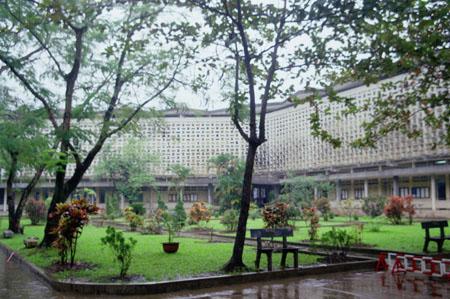
Hue has 5 universities, with many foreign teachers who happily stay on after the exchange period is over.
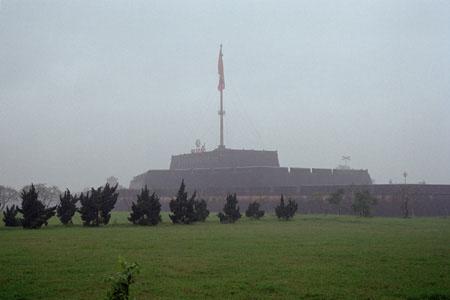
Built by the Nguyen emperors, this was the scene of some of the fiercest fighting in the American war. Sadly, a lot of the Citadel is now used for farming.
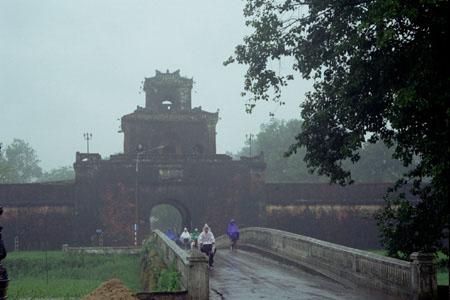
(Note the great weather.) There's watercress growing on either side of the bridge.
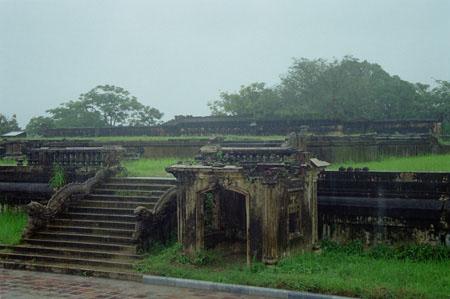
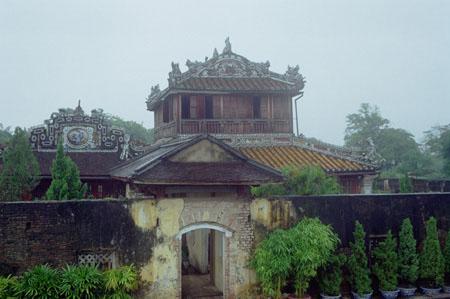
As seen from a raised garden
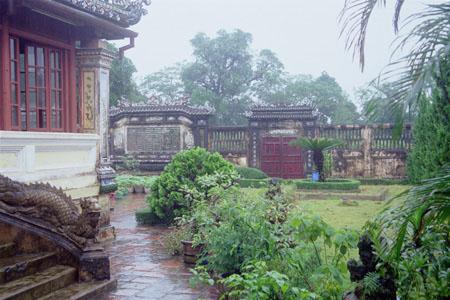
With a bulbous-nosed dragon guarding the stairs
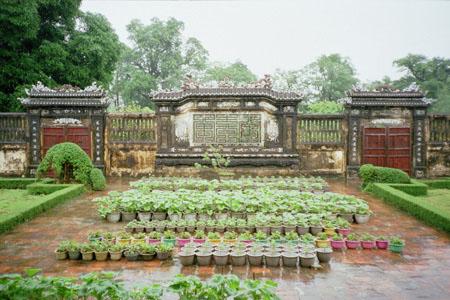
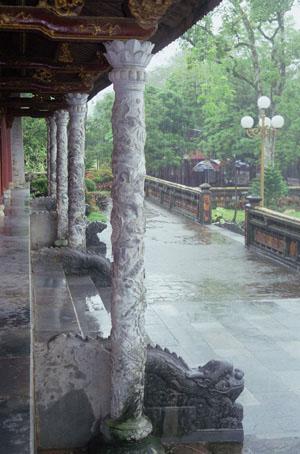
The dragons' faces remind me of New York cab drivers.
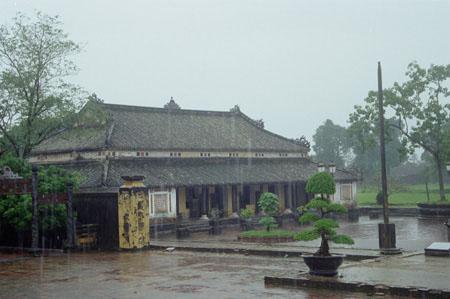
Next to the Hall of the Left Luggage. The Right Mandarin has a matching hall on the other side of the square.
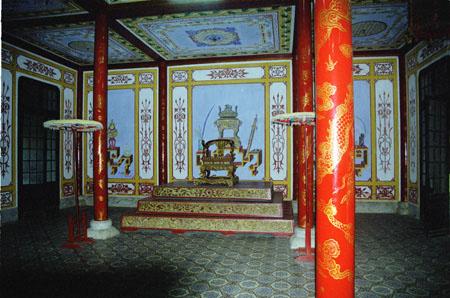
If this is how the mandarins conducted their business, you can imagine how the emperors ran theirs.

Hard to tell the where street begins and the river ends. This was the view as we went across Hue by cyclo to take in the sights. We had just looked at a large Buddhist stupa.
For the local residents, this was only a minor hiccup.
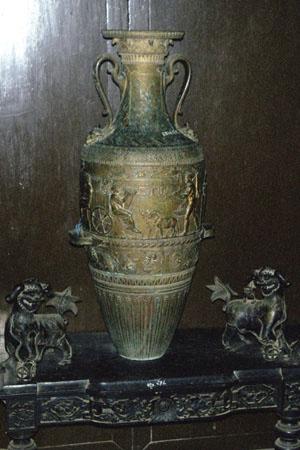
Unfortunately, the museum roof had water pouring in. Vietnam is starting to realize how important history (and tourism) is, but the money to upgrade everything won't come overnight.
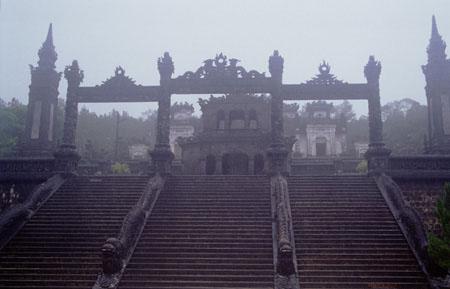
Khai Dinh was the father of Bao Dai, the last Vietnamese emperor. During his nine-year reign, the French were the ones really running the show. His tomb combines Vietnamese and Western styles.
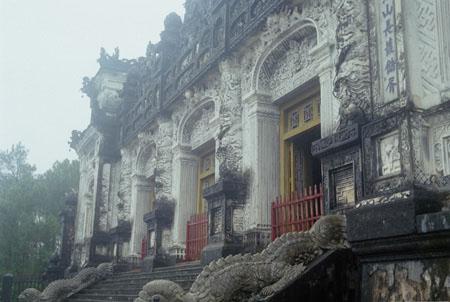
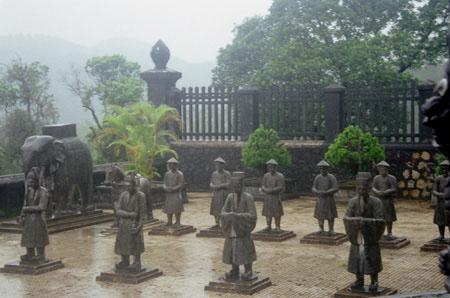
Some clever tourist posed with them in his rain slicker.

(Pardon the horrible lighting.) A painting of Khai Dinh and other bric-a-brac. The walls behind incorporate bits of broken glass bottles into the pattern, a uniquely Vietnamese way of decorating.
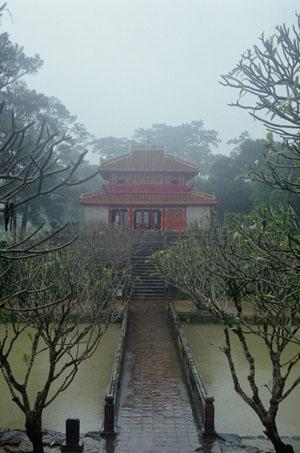
It's an enormous park with many buildings, which took years to complete. Tu Duc used the place while he was still alive.
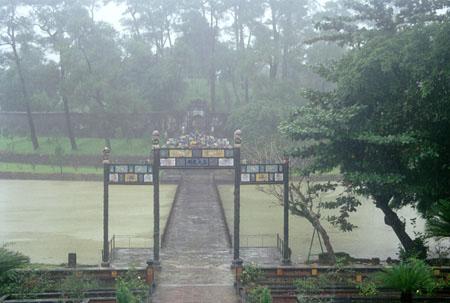
The lake is an artificial moat for one of the tombs
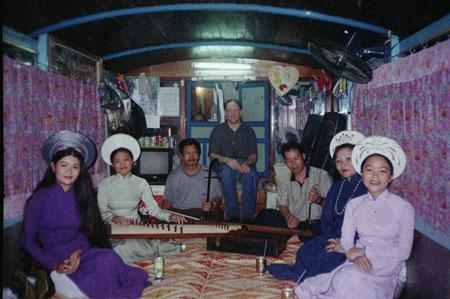
Zither, snakeskin fiddle, monochord, percussion and singers.
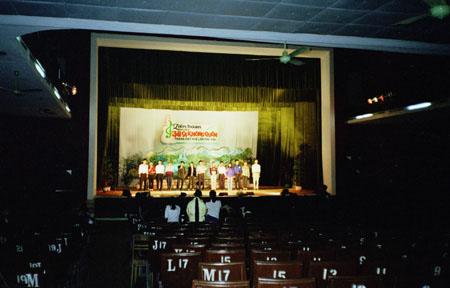
We walked in on a rehearsal of some rousing communist tunes. There was plenty of showmanship, and what they were lacking in talent, they amply made up for in lack of talent. Maybe their parents will attend.